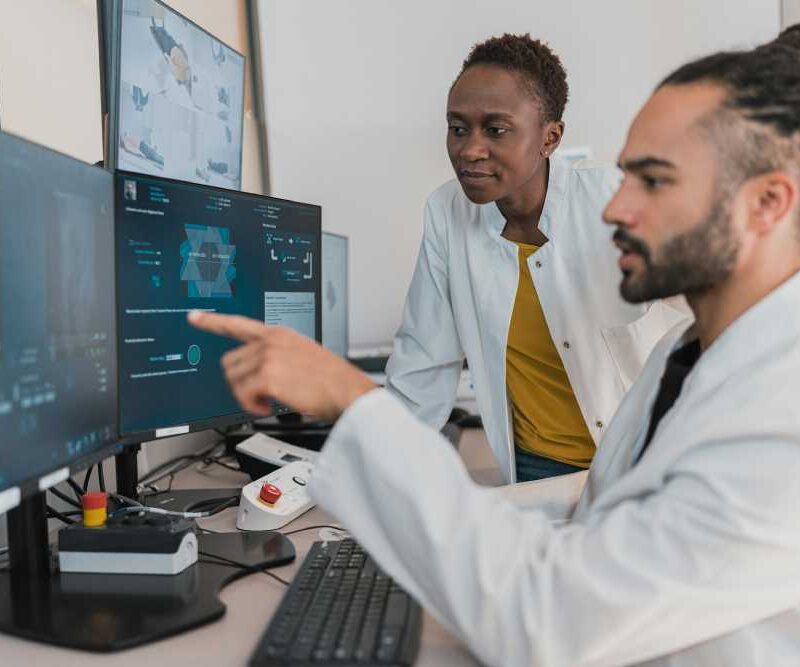Modern imaging technology has revolutionized how diseases are diagnosed and treated. Today, modalities such as MRI, CT, and PET scans provide highly detailed images that enable healthcare professionals to pinpoint exact issues.
These medical imaging solutions are critical for early detection and accurate diagnosis, setting the stage for effective treatment plans. According to Healthline, imaging technologies facilitate early diagnosis and minimize the need for invasive procedures, thereby reducing patient discomfort and potential risks.
Artificial Intelligence in Radiology
Artificial intelligence is playing a transformative role in the field of radiology by boosting the accuracy and efficiency of image analysis. AI algorithms can quickly process extensive imaging data, identifying anomalies and patterns with a precision that often surpasses traditional methods. This is particularly beneficial in detecting severe conditions such as cancer early.
For instance, an AI system can scan thousands of images in a fraction of the time it would take a human, making it an invaluable tool in busy clinical settings. BBC News has reported on AI’s effectiveness in improving diagnostic outcomes, showcasing cases where AI tools have equaled or surpassed human radiologists in specific diagnostic tasks.
Improving Patient Outcomes and Reducing Costs
Radiology advancements not only enhance patient outcomes but also help reduce healthcare costs. Faster and more precise diagnoses minimize unnecessary treatments and procedures, often leading to substantial financial savings.
This is particularly significant in critical care and chronic disease management, where timely and accurate diagnosis can dramatically alter the patient’s prognosis. Early detection through advanced imaging can also shift healthcare systems from reactive to proactive management, addressing health issues before they become severe.
Moreover, preventing false positives reduces the emotional and financial burden on patients and healthcare providers.
The Impact of Telehealth on Radiology
Telehealth has become vital for increasing healthcare accessibility, especially in radiology. Remote imaging services allow radiologists to interpret images from anywhere, providing expert analysis without requiring patients to travel. This is particularly beneficial in rural and underserved areas with limited access to specialized healthcare.
With secure, high-speed data transmission advancements, images can be shared in real-time with radiologists worldwide. This innovation reduces patient waiting times and brings essential radiology expertise to locations that might otherwise need such services.
Challenges and Future Directions
While radiology has seen tremendous advancements, it still faces significant challenges. Critical hurdles include continuous technological upgrades, data security, and integrating new technologies into existing systems.
Addressing these challenges requires collaborative efforts among healthcare providers, technology developers, and regulatory bodies. Future innovations include machine learning, blockchain technology for secure data management, and enhanced interoperability standards, which promise to drive further advancements in radiology.
Continuous Professional Development
Staying updated with the latest technologies and practices is crucial for radiologists. Continuous professional development through training and education ensures that radiologists can provide the highest standard of care.
Attending educational programs, workshops, and seminars helps radiologists stay proficient with the latest advancements, ultimately leading to better patient outcomes. Additionally, a well-informed radiologist can better educate and inform patients, enhancing their healthcare experience.
Conclusion
Advancements in radiology and imaging technology are fundamentally transforming healthcare. These innovations offer more precise diagnostics, improved patient outcomes, and cost-effective solutions.
As technology continues to evolve, the future of radiology holds even greater potential for enhancing patient care and expanding healthcare accessibility. Embracing these innovations will ensure that radiology remains a cornerstone of modern medicine for years.







